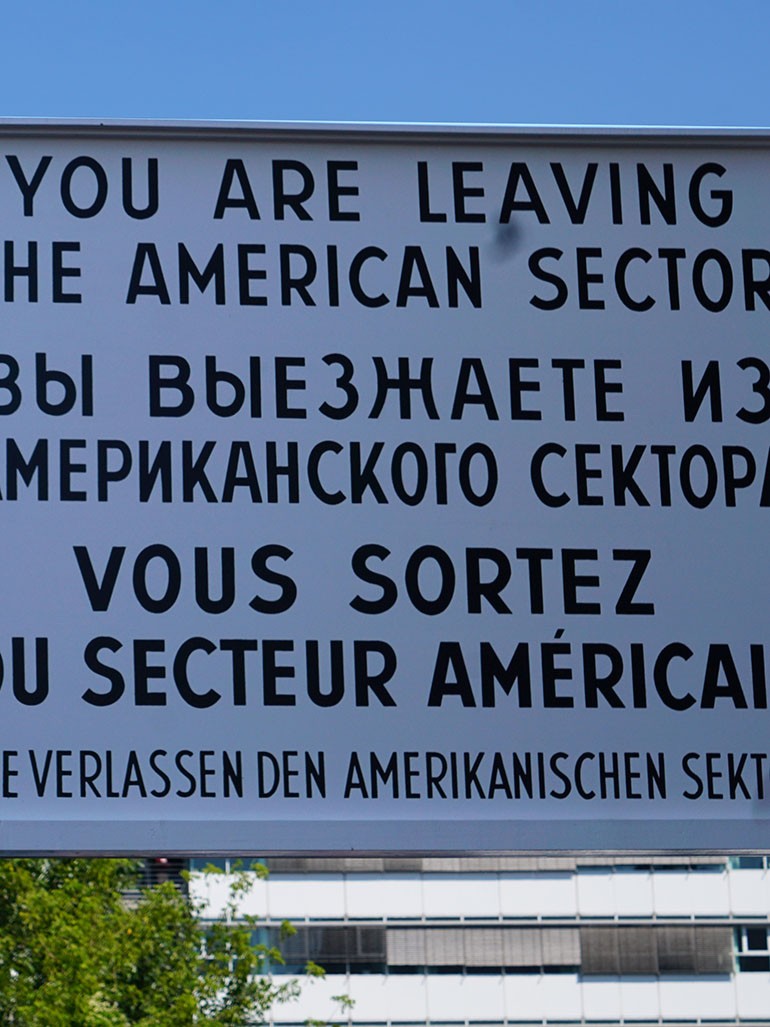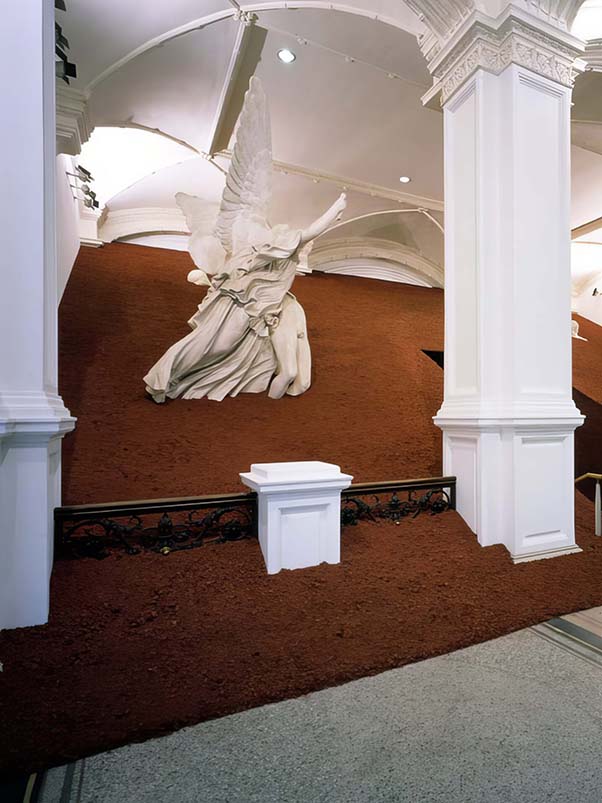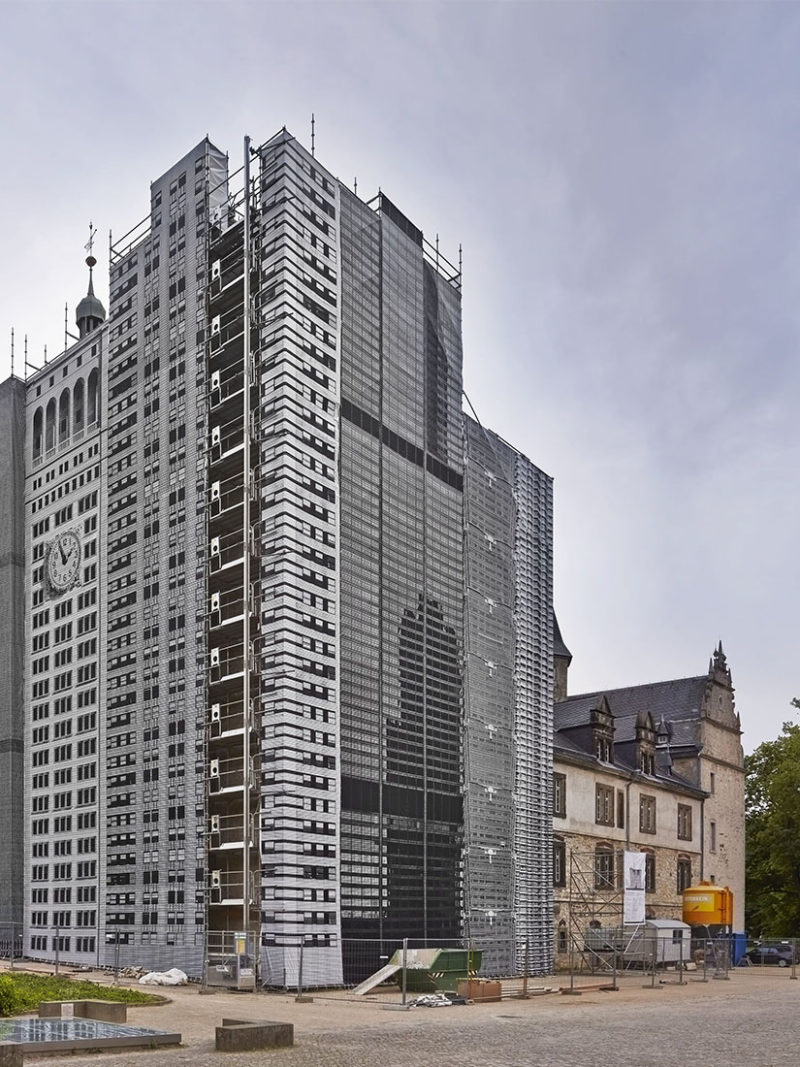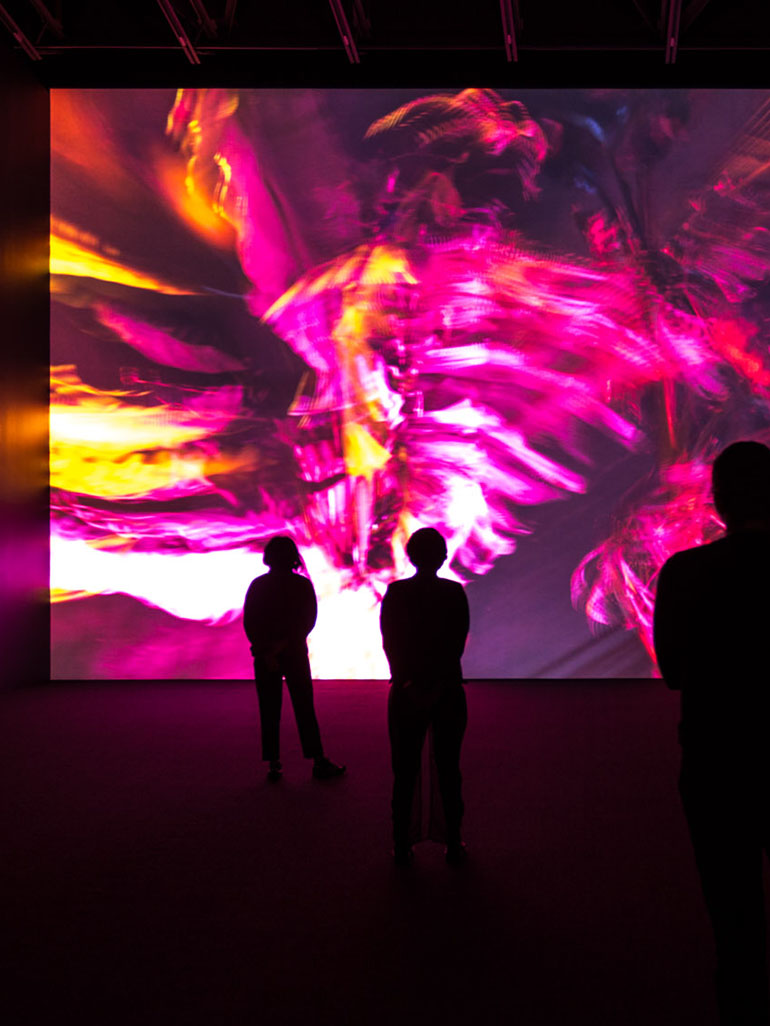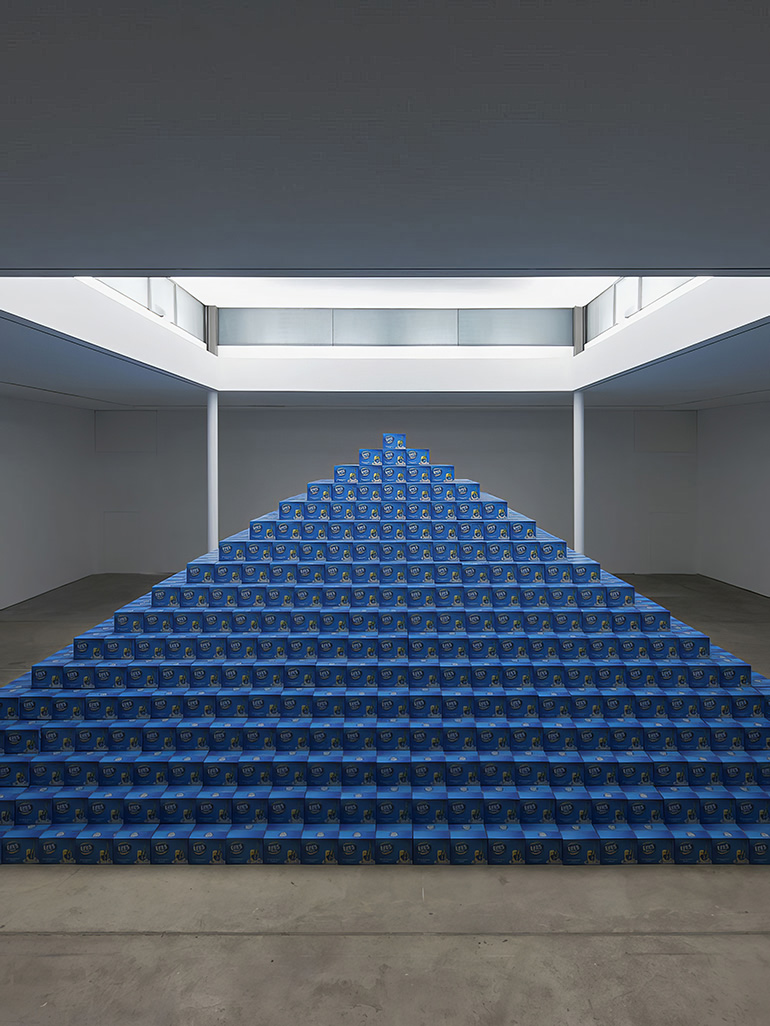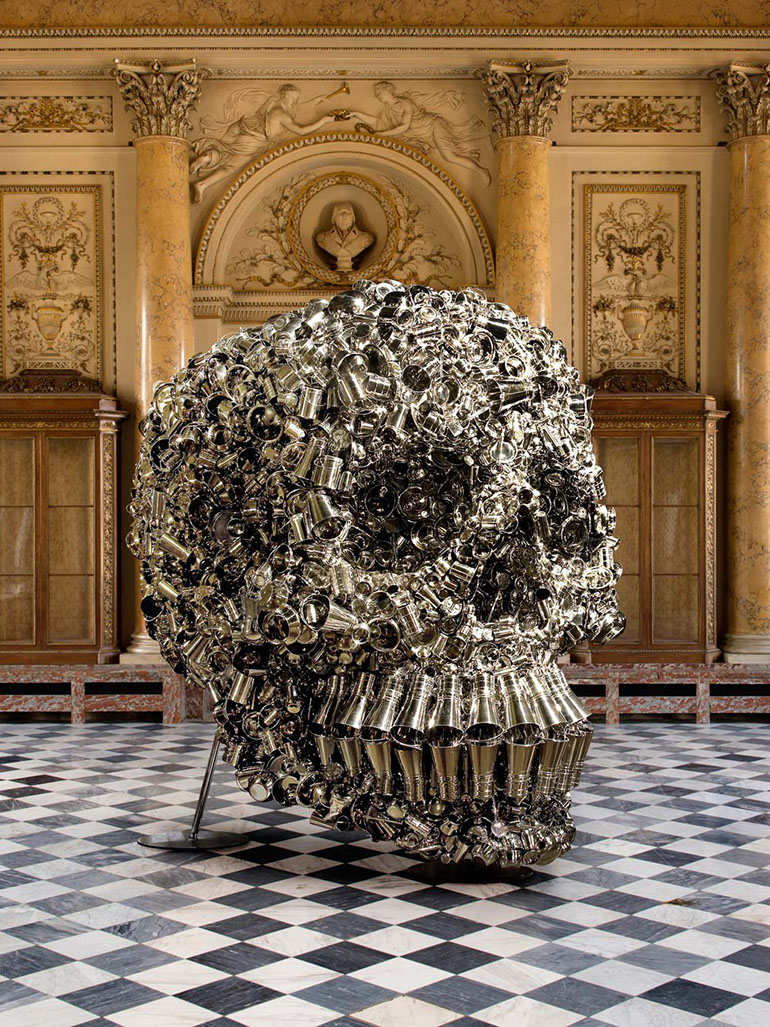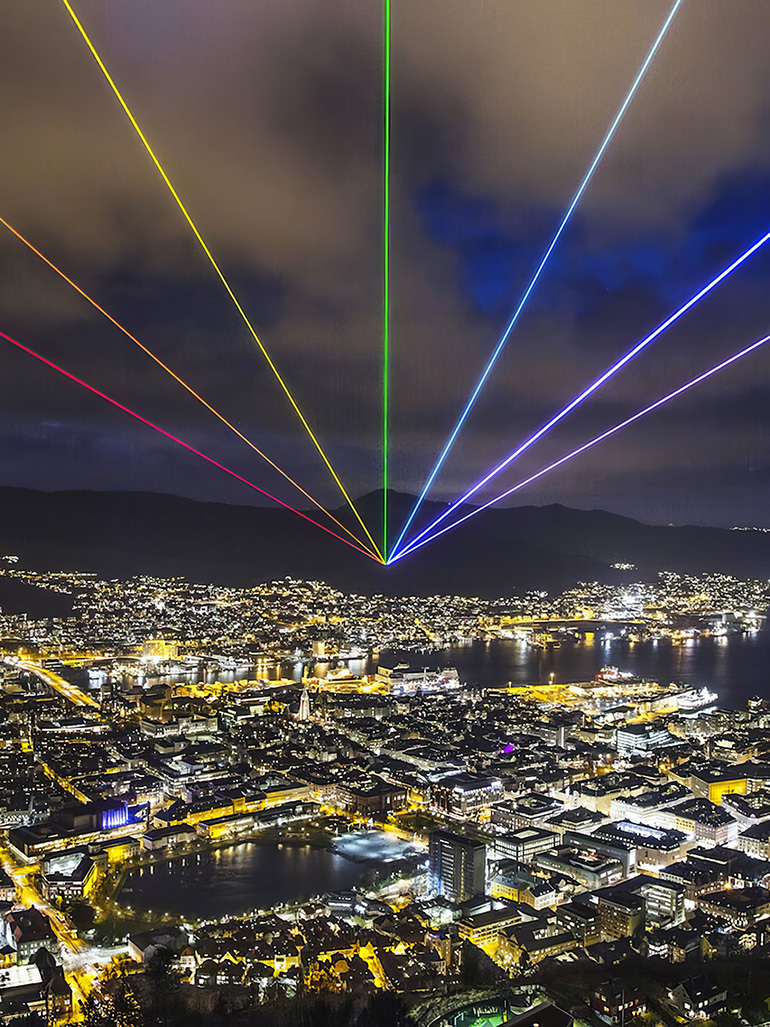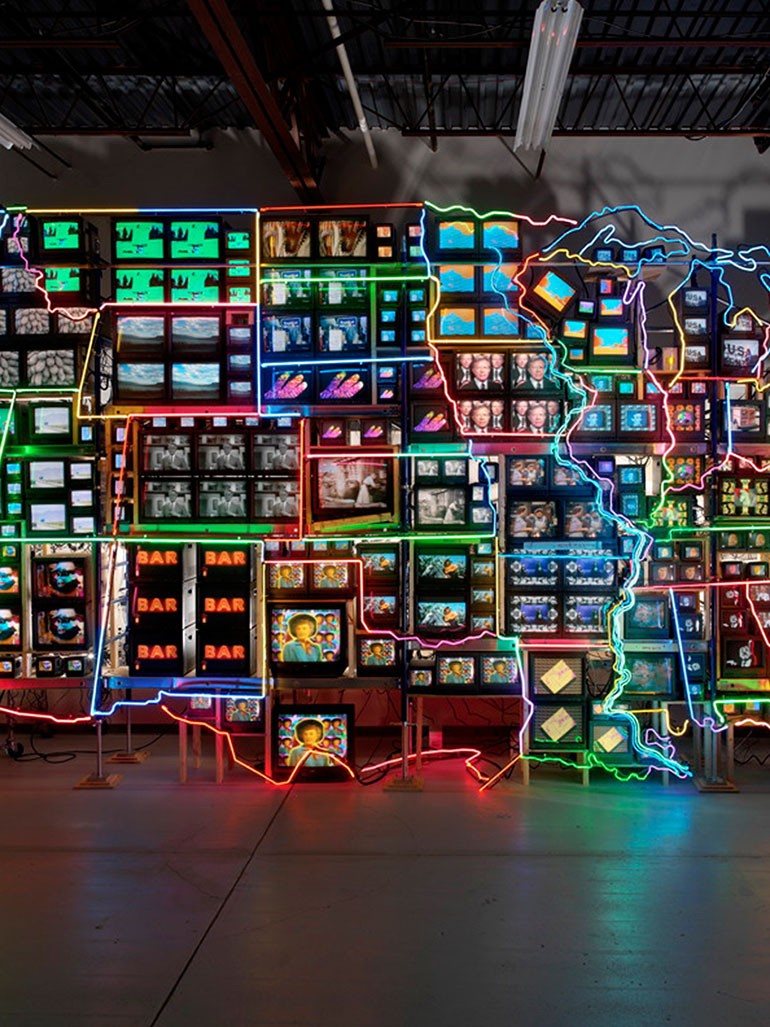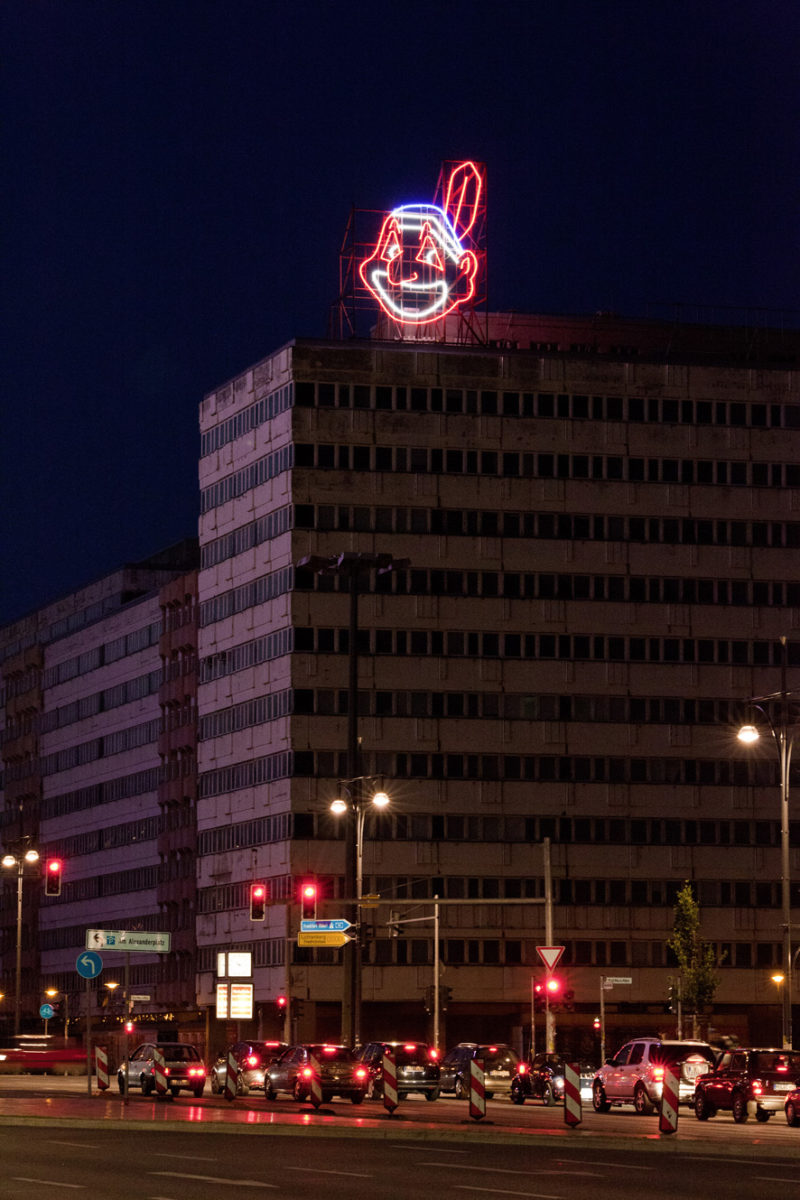
Permanently closed
The neon sculpture was installed atop the Haus der Statistik at Alexanderplatz, Berlin, as part of a public art project.
It was on view from July 17 to December 11, 2011.
Introduction
The mascot of the American baseball team Cleveland Indians, popularly known as Chief Wahoo, is as highly recognized as it is controversial 12. That makes Cyprien Gaillard’s 3 (b. 1980) installation on top of Haus der Statistik 4, an abandoned government building in Alexanderplatz 5, Berlin 6, a headline magnet. At times, the arbitrariness of what symbolic icons can make their way into fine arts is mind-blowing.
Neon Indian
It’s true; the mascot and logo of the Cleveland Indians baseball team exude a certain sense of vintage and the appeal of a classic American popular culture icon. But never in a million years would anything have imagined the mascot would be the concept behind one of the most-talked-about art installations.
The public art project by the fine French artist Cyprien Gaillard is a 10-meter Neon Indian. Installed in 2011, it competed for the attention of passers-by with the numerous billboards and outdoor advertisements that were perched on top of the buildings in this area.
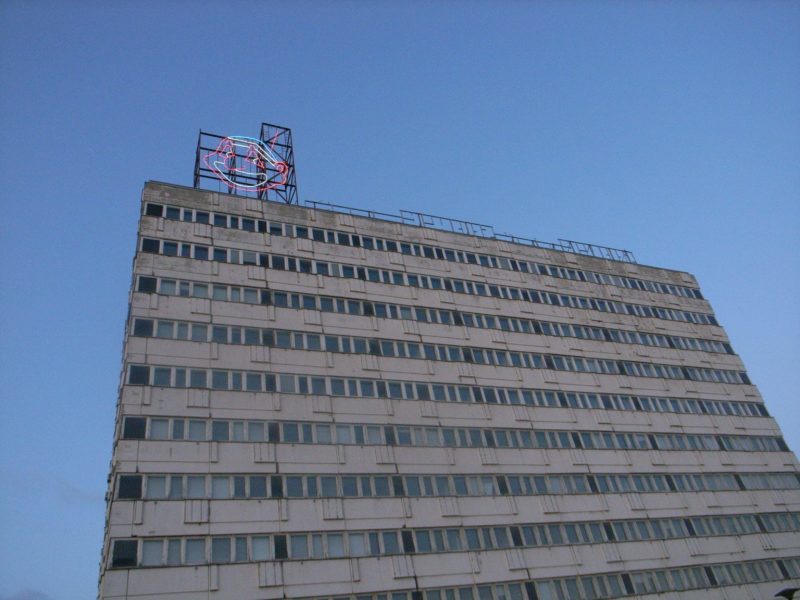
The preparations for this project took two years. Gaillard said in an interview 78:
I really wanted to do something in the city, an installation for millions, so to speak.
The meaning of the artwork
The artist was, in part, trying to strike a chord with the notion of Indian American imagery being utilized in an almost mundane and dated manner in American society. Interestingly, it is not the first time artist Cyprien Gaillard has incorporated Native American imagery into his artworks, but somehow this art piece invoked the strongest public opinion and critique 910.
Tucked atop a vacated former communist 11 regime building in Alexanderplatz, the Neon Indian is a depiction of the controversial mascot of the US baseball team Cleveland Indians. The toothy smile and piercing eyes of the legendary Chief Wahoo make for an equally perplexing and somewhat disturbing spectacle for those who pass through.
The ‘50s bar style neon 12 installation was created by Cyprien Gaillard in collaboration with DAAD’s Berliner Künstlerprogramm. The art piece is an almost uncanny rendering of the classic mascot.
Gaillard’s regular utilization of the mascot in his work pays homage to the paradox and enigma surrounding the American sports franchises’ use of Indian American imagery and naming despite the nation’s horrific treatment of its indigenous people.
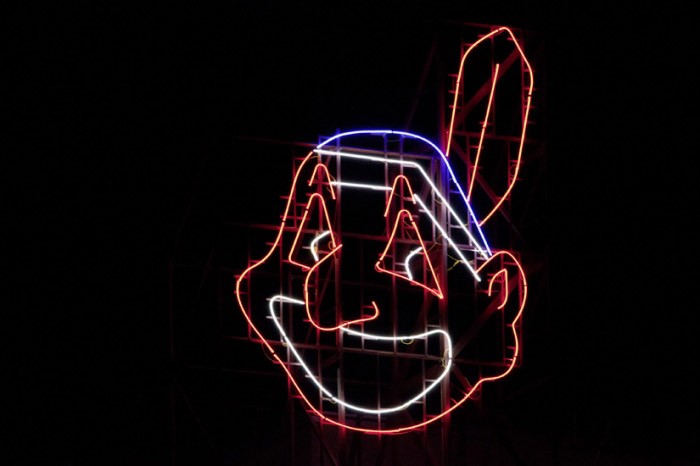
By design, the work is integrated into likely-to-be destroyed or nearly derelict buildings. The artist’s explanation for the public art piece 13 points to the idea that the Native American icon symbolizes Cleveland, which is an epitome of urban planning futility or rapid urban decline.
Many Native American tribes previously lived in the area of what is now the state of Ohio, but only through the economic downfall of the city was it possible for their offspring to move back to Cleveland. Gaillard said 1415:
That’s why I like the Neon Indian so much. He shows that cities cannot be fixed, that they are always changing. According to the motto: He who laughs last…”
It also speaks to the ever-evolving urban environment and situations that create and record the contradictions of our post-industrial society from an architectural context. The relocation and dislocation of the artwork are core to Cyprien’s work, which fluctuates between modern and ancient, exploring the concepts of urban destruction, reconstruction, and conservation.
The project, which combines a symbol of the American Rust Belt with a souvenir of Communist town planning, is meant to reflect on the broader subject of urban decline. And it would only be possible in Berlin. You would never find an abandoned building in the middle of Paris.
Conclusion
Neon Indian by Cyprien Gaillard was a thought-provoking and critical artwork in many regards. By sitting atop a vacated former communist building, it lays as a silent witness to the downfall of the former metropolis of Cleveland.
Born in Paris in 1980, Gaillard has exhibited worldwide, including at the Mori Art Museum 18, Center Pompidou 19, Hirshhorn Museum 20, Gwangju Biennial, and The Museum of Modern Art, New York 21.
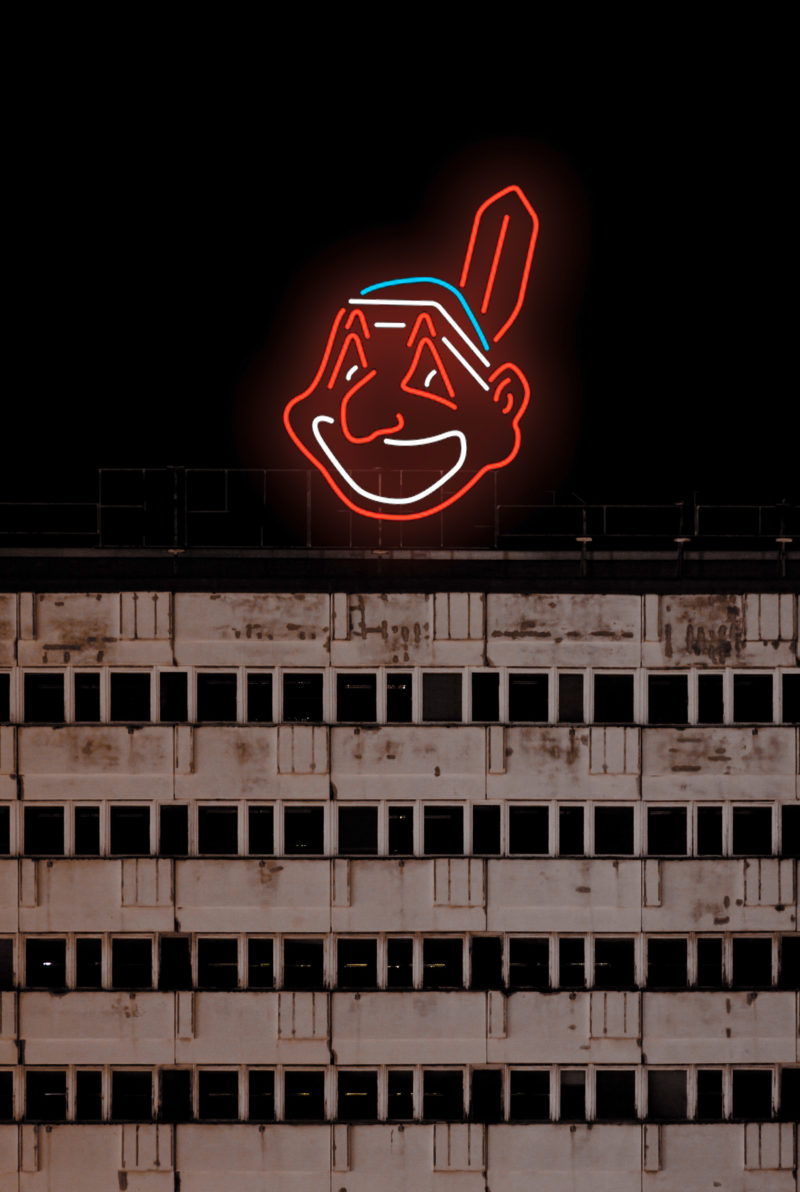
Explore nearby
Haus der Statistik, Berlin, Germany
 Keith Haring's Berlin Wall muralInstallation ended3 km away
Keith Haring's Berlin Wall muralInstallation ended3 km away Magdalena Jetelová's pyramid installationsExhibition ended (dismantled in 1994)3 km away
Magdalena Jetelová's pyramid installationsExhibition ended (dismantled in 1994)3 km away Martin Kippenberger's metro stations143 km away
Martin Kippenberger's metro stations143 km away Bettina Pousttchi covered an entire castleInstallation ended (dismantled in 2014)178 km away
Bettina Pousttchi covered an entire castleInstallation ended (dismantled in 2014)178 km away Brad Downey's McDonald’s mural217 km away
Brad Downey's McDonald’s mural217 km away
